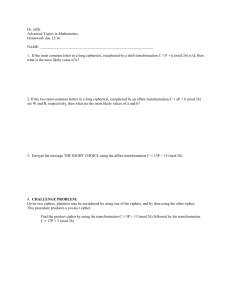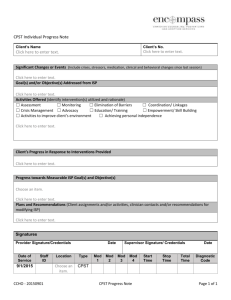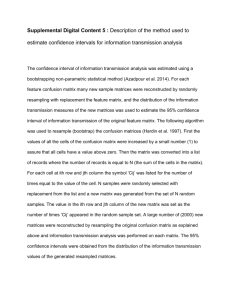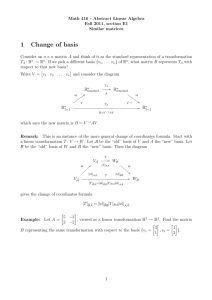Math Topics Polyalphabetic Ciphers – Matrix math Name All of the
advertisement
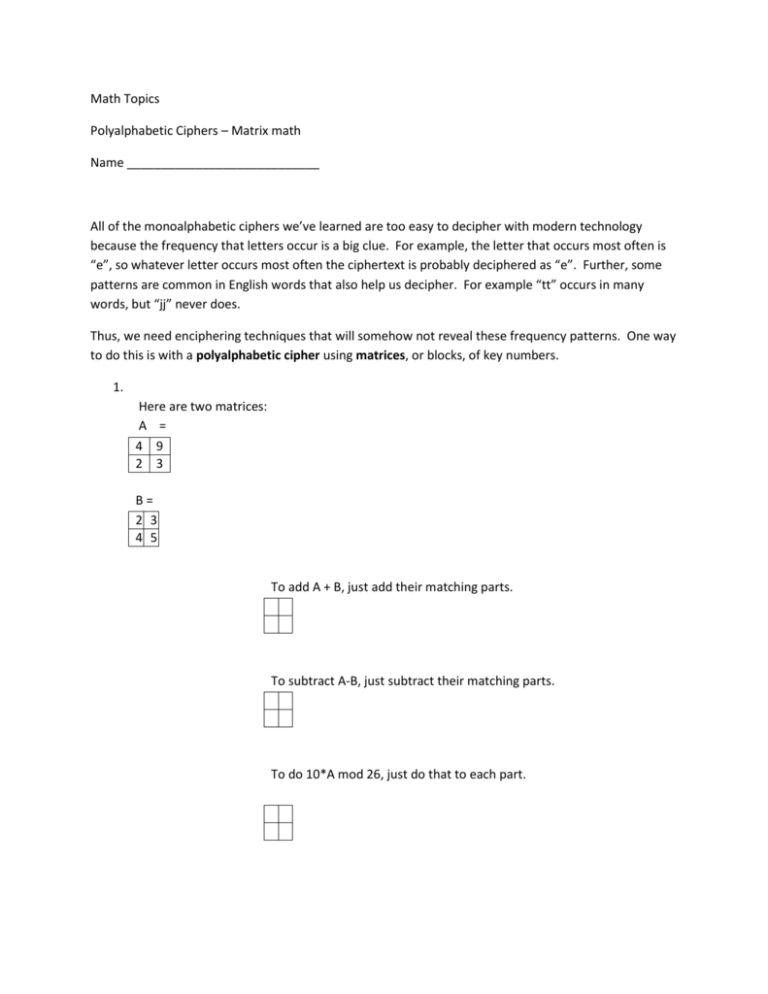
Math Topics Polyalphabetic Ciphers – Matrix math Name ____________________________ All of the monoalphabetic ciphers we’ve learned are too easy to decipher with modern technology because the frequency that letters occur is a big clue. For example, the letter that occurs most often is “e”, so whatever letter occurs most often the ciphertext is probably deciphered as “e”. Further, some patterns are common in English words that also help us decipher. For example “tt” occurs in many words, but “jj” never does. Thus, we need enciphering techniques that will somehow not reveal these frequency patterns. One way to do this is with a polyalphabetic cipher using matrices, or blocks, of key numbers. 1. Here are two matrices: A = 4 9 2 3 B= 2. 3. 4. 5. To add A + B, just add their matching parts. To subtract A-B, just subtract their matching parts. To do 10*A mod 26, just do that to each part. 2. Multiplying two matrices is a little more work. Here is the pattern to follow for matrices of the size we’re using: a) Write out the pattern matrix for A*B b) Simplify the pattern matrix to get your final answer for A*B c) Write out the pattern matrix for B*A (it’s different!) d) Simplify the pattern matrix to get your final answer for B*A. 3. Use the pattern to find CD and DC. C= 6 2 1 0 D= 7 3 2 5 4. It is a little easier if we use a smaller matrix for our second matrix: E= 5 3 11 8 F= 2 15 To do E*F, do 5*2 + 3*15 for the top number, and 11*2 + 8*15 for the bottom number. E*F = 55 142 a) Multiply E*F if we changed F’s numbers to 3 and 4. b) Multiply E*F if we changed the top row of E to 1 and 3. c) When we learn how to use these matrices for enciphering, we’ll have to change the numbers to mod 26. So change E*F shown in the example to mod 26 and write your answer matrix below. d) Change E*F in part a) to mod 26. e) Change E*F in part b) to mod 26.






